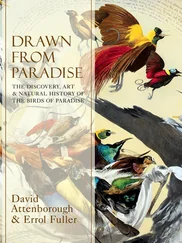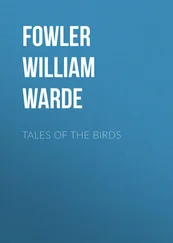William Fowler - A Year with the Birds
Здесь есть возможность читать онлайн «William Fowler - A Year with the Birds» — ознакомительный отрывок электронной книги совершенно бесплатно, а после прочтения отрывка купить полную версию. В некоторых случаях можно слушать аудио, скачать через торрент в формате fb2 и присутствует краткое содержание. Жанр: foreign_antique, foreign_prose, на английском языке. Описание произведения, (предисловие) а так же отзывы посетителей доступны на портале библиотеки ЛибКат.
- Название:A Year with the Birds
- Автор:
- Жанр:
- Год:неизвестен
- ISBN:нет данных
- Рейтинг книги:4 / 5. Голосов: 1
-
Избранное:Добавить в избранное
- Отзывы:
-
Ваша оценка:
- 80
- 1
- 2
- 3
- 4
- 5
A Year with the Birds: краткое содержание, описание и аннотация
Предлагаем к чтению аннотацию, описание, краткое содержание или предисловие (зависит от того, что написал сам автор книги «A Year with the Birds»). Если вы не нашли необходимую информацию о книге — напишите в комментариях, мы постараемся отыскать её.
A Year with the Birds — читать онлайн ознакомительный отрывок
Ниже представлен текст книги, разбитый по страницам. Система сохранения места последней прочитанной страницы, позволяет с удобством читать онлайн бесплатно книгу «A Year with the Birds», без необходимости каждый раз заново искать на чём Вы остановились. Поставьте закладку, и сможете в любой момент перейти на страницу, на которой закончили чтение.
Интервал:
Закладка:
The Gray Wagtail is misnamed, both in English and Latin; as we might infer from the fact that in the one case it is named from the colour of its back, and in the other from that of its belly. 5 5 The scientific name is Motacilla sulphurea (in Dresser’s List, M. melanope).
It should be surely called the Long-tailed Wagtail, for its tail is nearly an inch longer than that of any other species; or the Brook-Wagtail, because it so rarely leaves the bed of the stream it haunts. All other Wagtails may be seen in meadows, ploughed fields, and uplands; but though I have repeatedly seen this one within the last year in England, Wales, Ireland, and Switzerland, I never but once saw it away from the water, and then it was for the moment upon a high road in Dorsetshire, and within a few yards of a brook and pool. Those who wish to identify it must remember its long tail and its love of water, and must also look out for the beautiful sulphur yellow of its under parts; in the spring both male and female have a black chin and throat, like our common Pied Wagtail. No picture, and no stuffed specimen, can give the least idea of what the bird is like: the specimens in our Oxford Museum look “very sadly,” as the villagers say; you must see the living bird in perpetual motion, the little feet running swiftly, the long tail ever gently flickering up and down. How can you successfully draw or stuff a bird whose most remarkable feature is never for a moment still?
While I am upon Wagtails, let me say a word for our old friend the common Pied Wagtail, who is with us in varying numbers all the year round. It is for several reasons a most interesting bird. We have known it from our childhood; but foreign bird-lovers coming to England would find it new to them, unless they chanced to come from Western France or Spain. Like one or two other species of which our island is the favourite home, it is much darker than its continental cousin the White Wagtail, when in full adult plumage. Young birds are indeed often quite a light gray, and in Magdalen cloisters and garden, where the young broods love to run and seek food on the beautifully-kept turf, almost every variety of youthful plumage may be seen in June or July, from the sombrest black to the brightest pearl-gray. Last summer, I one day spent a long time here watching the efforts of a parent to induce a young bird to leave its perch and join the others on the turf: the nest must have been placed somewhat high up among the creepers, and the young bird, on leaving it, had ventured no further than a little stone statue above my head. The mother flew repeatedly to the young one, hovered before it, chattered and encouraged it in every possible way; but it was a long time before she prevailed.
Let us now return towards the city, looking into the Parks on our way. The Curators of the Parks, not less generous to the birds than to mankind, have provided vast stores of food for the former, in the numbers of birches and conifers which flourish under their care. They, or their predecessors who stocked the plantations, seem to have had the particular object of attracting those delightful little north-country birds the Lesser Redpolls, for they have planted every kind of tree in whose seeds they find a winter subsistence. Whether they come every winter I am unable to say, and am inclined to doubt it; but in 1884, any one who went the round of the Parks, keeping an eye on the birches, could hardly fail to see them, and they have been reported not only as taking refuge here in the winter, but even as nesting in the summer. A nest was taken from the branch of a fir-tree here in 1883, and in this present year, if I am not mistaken, another nest was built. I failed to find it, but I several times saw a pair of sportive Redpolls at the south-east corner of the Parks. 6 6 At this same south-east corner, in May 1889, I have several times found the trees above me alive with these bold little birds. I have also seen an egg taken from a nest in the Botanic Garden. We may now, I think, reckon these as residents both in summer and winter.
It is one of the prettiest sights that our whole calendar of bird-life affords, to watch these tiny linnets at work in the delicate birch-boughs. They fear no human being, and can be approached within a very few yards. They almost outdo the Titmice in the amazing variety of their postures. They prefer in a general way to be upside down, and decidedly object to the common-place attitudes of more solidly built birds. Otherwise they are not remarkable for beauty at this time of year; their splendid crimson crest – the “Bluttropf,” as the Germans aptly call it – is hardly discernible, and the warm pink of their breasts has altogether vanished.
Before we leave the Parks I must record the fact that an eccentric Jack-snipe, who ought to have considered that he is properly a winter bird in these parts, was several times flushed here by the Cherwell in the summer of 1884, and the natural inference would be that a pair had bred somewhere near. Col. Montagu, the most accurate of naturalists, asserted that it has never been known to remain and breed in England; yet the observer in this case, a well-known college tutor who knows a Jack-snipe when he sees it, has assured me positively that there was no mistake; and some well-authenticated cases seem to have occurred since Montagu wrote. 7 7 A Jack-snipe picked up under the telegraph wires at Banbury in July, 1885, was (Mr. Aplin tells me) in an emaciated condition; possibly an injured bird unable to migrate.
There are plenty of common birds to be seen even in winter on most days in the Parks, such as the Skylark, the Yellow-hammer and its relative the Black-headed Bunting, the Pied Wagtail, the Hedge-sparrow, and others; though lawn-tennis, and cricket, and new houses and brick walls, are slowly and surely driving them beyond the Cherwell for food and shelter. But there are some birds which may be seen to greater advantage in another part of Oxford, and we will take the short line to Christchurch Meadow, past Holywell Church, doubtless the abode of Owls, and the fine elms of Magdalen Park, beloved by the Woodpigeons.
All this lower part of the Cherwell, from Holywell mill to its mouth at the barges, abounds in snug and secure retreats for the birds. In Addison’s Walk, as well as in the trees in Christchurch Meadow, dwell the Nuthatch and the Tree-creeper, both remarkable birds in all their ways, and each representative of a family of which no other member has ever been found in these islands. They are tree-climbing birds, but they climb in very different ways: the Creeper helping himself, like the Woodpeckers, with the downward-bent feathers of his strong tail; while the Nuthatch, having no tail to speak of, relies chiefly on his hind claw. These birds are now placed, on account of the structure of their feet, in a totally different order to that of the Woodpeckers, who rank with the Swifts and the Nightjars.
One is apt to think of the Creeper as a silent and very busy bird, who never finds leisure to rest and preen his feathers, or to relieve his mind with song. When he does sing he takes us a little aback. One spring morning, as I was strolling in the Broad Walk, a Creeper flew past me and fixed himself on the thick branch of an elm – not on a trunk, as usual – and uttered a loud and vigorous song, something after the manner of the Wren’s. I had to turn the glass upon him to make sure that there was no mistake. This is the only occasion on which I have ever heard the Creeper sing, and it seems strange that a bird with so strong a voice should use it so seldom.
I have never but once seen the Green Woodpecker in Oxford, and that was as he flew rapidly over the Parks in the direction of the Magdalen elms. If he lives there, he must be known to the Magdalen men, but I have not had intelligence of him. The fact is that he is a much wilder bird than his near relation, the Lesser Spotted Woodpecker, who is, or was, beyond doubt an Oxford resident. A correspondent of the Oxford Magazine , “R. W. R.,” states that this bird bred outside his window at Trinity a few years ago, “but has not done so lately for reasons of his own, of which I approve.” Another correspondent, however, reports him from Addison’s Walk; and Mr. Macpherson of Oriel, whose eye is not likely to have erred, believed that he saw one in the Broad Walk a few years ago. I myself have not seen the bird nearer Oxford than Kennington; but I am pretty sure that it is commoner and also less shy than is generally imagined, and also that the ornithologist who sees it is not likely to mistake it for another bird: its very small size – it is not so large as a sparrow – its crimson head, and its wings, with their black and white bars, making it a conspicuous object to a practised eye. 8 8 In May, 1886, I saw one in a pollard willow at the northern edge of the Parks, near the new boathouse.
Интервал:
Закладка:
Похожие книги на «A Year with the Birds»
Представляем Вашему вниманию похожие книги на «A Year with the Birds» списком для выбора. Мы отобрали схожую по названию и смыслу литературу в надежде предоставить читателям больше вариантов отыскать новые, интересные, ещё непрочитанные произведения.
Обсуждение, отзывы о книге «A Year with the Birds» и просто собственные мнения читателей. Оставьте ваши комментарии, напишите, что Вы думаете о произведении, его смысле или главных героях. Укажите что конкретно понравилось, а что нет, и почему Вы так считаете.












